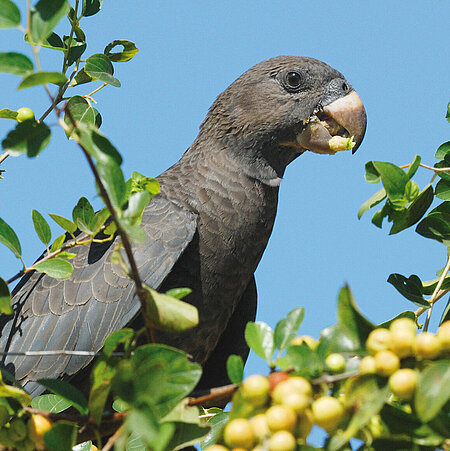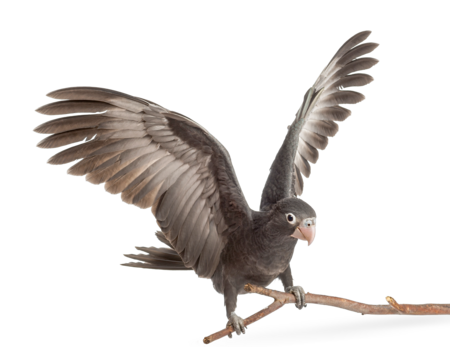Greater vasa parrot
Coracopsis vasa

- FamilyTrue parrots (Psittacidae)
- Weightup to 500 g
- Habitatdry deciduous forests
Unique features
Like all birds, the greater vasa parrot has only one opening for the digestive, reproductive, and urinary tracts, which is known as a “cloaca.” However, the greater vasa is unique among parrot species for the male’s ability to turn its cloaca outwards to form a hemi-penis. When mating, the male inserts his cloaca into the female cloacal area. The act of love sometimes only last a few seconds, but often up to half an hour.

Who’s the daddy?
Female greater vasa parrots are 25 % larger than the males and rule the roost. They often mate with several males and may incubate eggs from different fathers at the same time. During the short incubation period, which lasts only 18 days, the male provides the female with food, bringing fruits, berries, nuts and seeds to her nest.
During the breeding season, the female loses her head feathers and the exposed skin turns yellow-orange.
Distribution
